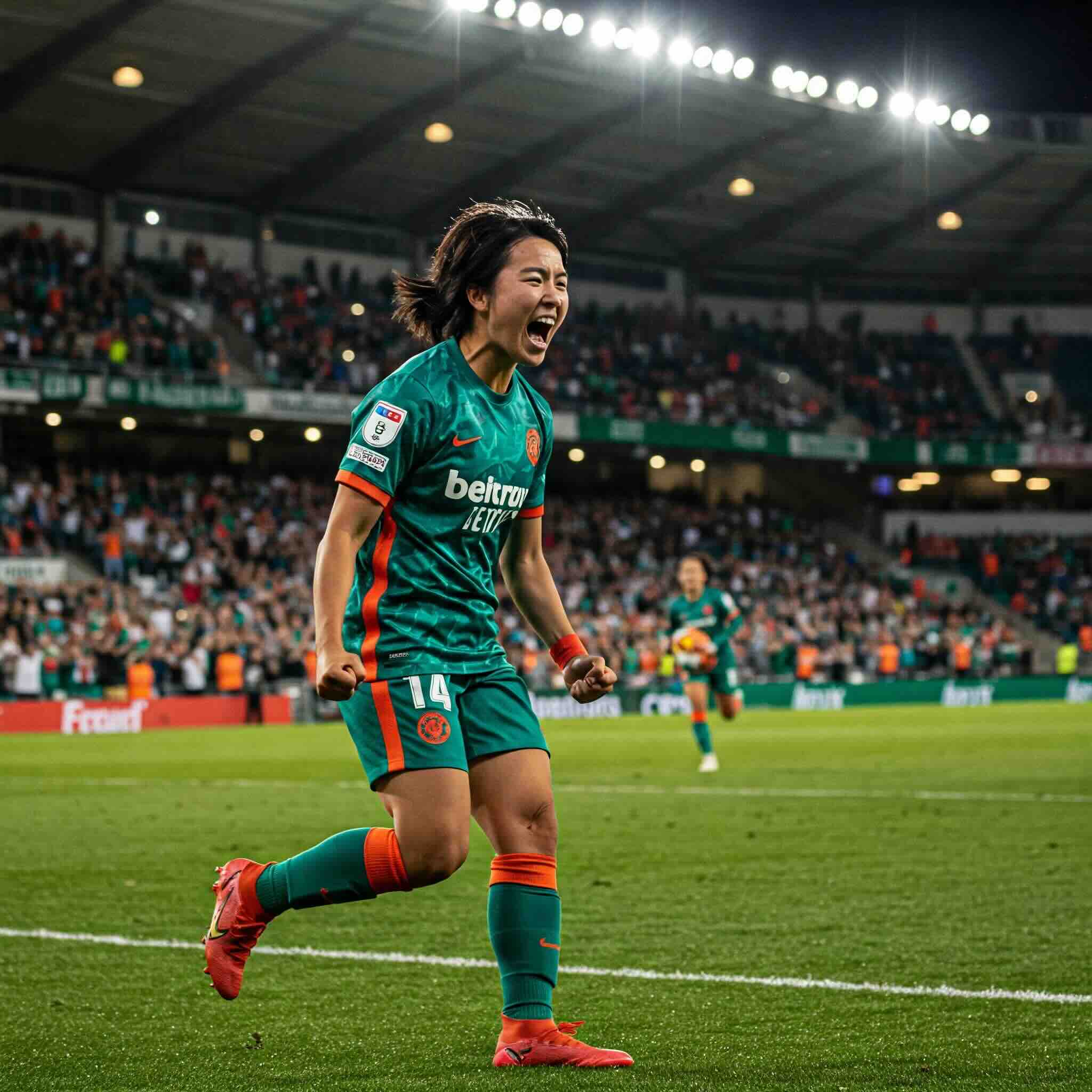Road to success for women’s football
Women’s football is experiencing a significant period of growth and increasing professionalisation across the globe. As the sport garners more attention from fans, media, and investors, diverse operational and ownership models are emerging for women’s football clubs. Understanding these models is crucial for comprehending the current state and future trajectory of the game. Three key models have become prominent in women’s football: the independent club model, the two-club model, and the one-club model.
I. The Rise of the Independent Model: Charting a Unique Course
- The NWSL: Independence as a Superpower
The National Women’s Soccer League (NWSL) in the United States operates under a unique single-entity structure. In this model, the league itself owns all the teams, and individual investors hold shares in the league as a whole. This framework provides the league governors with substantial control over strategic direction and financial decisions, fostering an environment conducive to sustainable growth and attracting a diverse range of investors. This allows for collective negotiation of lucrative broadcast and sponsorship deals, which benefit all member teams. For instance, the NWSL secured a landmark four-year domestic broadcast deal valued at US$240 million. This centralized approach also streamlines the implementation of league-wide standards, particularly in crucial areas such as player welfare and safety, as well as youth development.
A defining characteristic of the NWSL is the independence of the majority of its teams from existing men’s professional teams. This separation allows these women’s clubs to cultivate their own distinct brand identities and develop strategies that directly cater to the strengths and values of women’s football, unburdened by the often-overshadowing presence and priorities of a men’s counterpart.
The historical success of the United States Women’s National Team (USWNT) is often cited as being linked to the independent club model in the NWSL. The competitive environment and the increasing professional standards within the league likely play a significant role in the development of high-calibre players for the national team. The NWSL offers a consistent, high-level, and high-paying platform for elite American players to compete domestically, ensuring they face regular challenges that prepare them for the rigours of international competitions. The recent elimination of the draft empowers players with greater control over their careers, fostering a more competitive league as talent distribution becomes more driven by player preference and club appeal.
The financial health of the NWSL is on an upward trajectory, attracting increasing interest from investors. Rising team valuations, substantial media rights deals, and growing expansion fees all point to the sustainability and attractiveness of the independent model for those looking to invest in women’s football. This financial stability enables clubs to reinvest in their infrastructure and player development, creating a positive cycle of growth that further enhances the league’s appeal to both fans and investors.
- London City Lionesses: An Independent Voice in England
London City Lionesses provide a compelling case study of an independent women’s football club operating in a landscape largely dominated by teams affiliated with men’s clubs. As one of the few fully independent entities in the top two tiers of English women’s football, the Lionesses’ operational model stands apart. Their independence grants the club the autonomy to chart its own course and develop a distinct identity. However, this also presents unique challenges, particularly in terms of financial sustainability, as the club lacks the inherent resources and brand recognition often associated with larger, established men’s clubs. The club has faced periods of financial instability and player concerns, highlighting the difficulties that independent clubs can encounter in the competitive English women’s football environment.
A significant development for London City Lionesses was its acquisition by Michele Kang, who also controls the NWSL’s Washington Spirit and France’s Olympique Lyonnais Féminin, in December 2023. Kang’s investment and vision for the club involve integrating it into a multi-club ownership structure under Kynisca Sports International, which aims to provide the Lionesses with enhanced resources, improved infrastructure, and shared expertise across the network of clubs.
II. The Dynamics of the Two-Club Model: Separate Entities, Shared Ambitions?
- Real Madrid Femenino: Acquisition and Rebranding
Real Madrid‘s establishment of a women’s team in 2019 through the acquisition and rebranding of Club Deportivo Tacón offers a prominent case study of the two-club model in women’s football. Despite its long and illustrious history in men’s football, Real Madrid was relatively late in forming a women’s team, opting to acquire an already existing club rather than building one organically. This strategic decision to take over CD Tacón allowed Real Madrid to swiftly enter the top tier of Spanish women’s football, Liga F.
In the two-club model, while the men’s and women’s teams often share the same overarching brand, they typically function as separate business and sporting entities. Real Madrid Femenino operates with its own dedicated budget and plays its home matches at the Estadio Alfredo Di Stéfano, distinct from the men’s team’s iconic Santiago Bernabéu.
While benefiting from the global brand recognition of Real Madrid, the women’s team has its own distinct financial and operational considerations. Recently, the decision not to play their UEFA Women’s Champions League quarter-final match against Arsenal Women at the Santiago Bernabéu raised fresh discourse given the poor state of the pitch. Questions were asked about the club’s priorities when a two-club model women’s team was not allocated appropriate resources for such a high-profile game.
Real Madrid Femenino has demonstrated significant progress since its formation, quickly establishing itself as a strong contender in Liga F, consistently finishing as runners-up to the dominant FC Barcelona. The team harbours ambitions of breaking into the European elite and challenging FC Barcelona’s supremacy in both domestic and continental competitions. Indeed, Real Madrid Femenino beat FC Barcelona in March 2025 for the first time after nineteen consecutive El Clasico losses.
- Manchester United Women: Navigating Integration and External Perspectives
Although Manchester United Women decidedly fit into the one-club model, ownership has often come under fire by critics for neglecting the women’s team. This has been notably caused by comments from Jim Ratcliffe, who acquired a minority stake in the club and assumed control of football operations. Ratcliffe has publicly stated that his primary focus is on the men’s team due to its significantly higher revenue generation compared to the women’s team, and recently failed to recognise the women’s team’s club captain, Katie Zelem.
Fans and media who argue that the women’s team, despite its smaller revenue, deserves equal support and investment, especially considering their recent successes. The perception of the women’s team being a lower priority has raised concerns about potential limitations on their growth and ability to compete with top clubs like Arsenal and Chelsea, who are investing heavily in their women’s sides. The temporary relocation of the women’s training facilities to accommodate the men’s team’s refurbishment has further amplified these concerns. Despite these external perspectives, manager Marc Skinner has expressed that he feels supported by the club. Furthermore, the club has invested in infrastructure for the women’s team, including a new training facility, suggesting a long-term commitment to the women’s program despite the current focus on the men’s side.
III. The Strengths of the One-Club Model: Integration for Success
- FC Barcelona Femení: A Giant On and Off the Pitch
FC Barcelona Femení stands as a prime example of the successful integration of a women’s team into the overall structure and brand of a major football club. Officially becoming a section of FC Barcelona in 2002, the women’s team is deeply embedded within the club’s identity, benefiting from shared branding, resources, and a passionate fan base.
The professionalisation of FC Barcelona Femení in 2015 marked a pivotal moment in the club’s journey, propelling them to sustained dominance in both Spain and Europe. Since turning professional, the team has become the most successful women’s football club in Spain and a leading force in the UEFA Women’s Champions League. Their consistent investment in top-tier players and infrastructure has resulted in multiple Liga F titles and several Champions League victories. The team’s remarkable success has also translated into record-breaking attendance figures at the Camp Nou, with a peak of 91,648 in April 2022, demonstrating the deep connection they have cultivated with the club’s extensive fan base.
- Arsenal Women: The Legacy of Early Integration and Success
Arsenal Women boasts a long and rich history of integration within Arsenal FC, dating back to their formation in 1987. The club has fostered a strong “one-club mentality” for decades, recognizing the women’s team as an integral part of the Arsenal family. Arsenal Women were among the earliest women’s teams to affiliate with a prominent men’s side, granting them access to resources and brand recognition that were uncommon for women’s teams at the time. This early integration laid the foundation for their sustained success in English women’s football. The club actively promotes a unified fan base comprised of fans of both the men’s and women’s team.
In recent years, Arsenal Women has experienced increasing visibility and integration within the club, highlighted by the increase in the number of home matches played at the Emirates Stadium. This move to the club’s main stadium demonstrates a significant commitment to elevating the women’s team’s profile and enhancing fan engagement and saw success in multiple instances of selling out the stadium.
IV. Conclusion: The Evolving Tapestry of Women’s Football Club Development
Each of the three models plays a significant role in the ongoing development and growth of women’s football, and offer pathways for entry into women’s football, each with different advantages and hurdles. The independent model demonstrates the viability of women’s football as a standalone product capable of cultivating commercially viable and entertaining, high-quality football. The two-club model offers a pathway for women’s teams to benefit from the established brand recognition and potential financial resources of larger men’s clubs while maintaining a degree of separation in their operations and finances. However, the level of commitment and investment in the women’s team can be influenced by the men’s team’s performance and the overall priorities of the ownership. The one-club model represents the most integrated approach, with women’s teams operating as full and equal sections within the larger club structure. This model offers the greatest potential for resource sharing across all aspects of the club, from facilities and coaching to commercial partnerships and fan engagement. The one-club model, particularly when executed with sincere commitment, can elevate women’s football to the highest levels of the sport.

